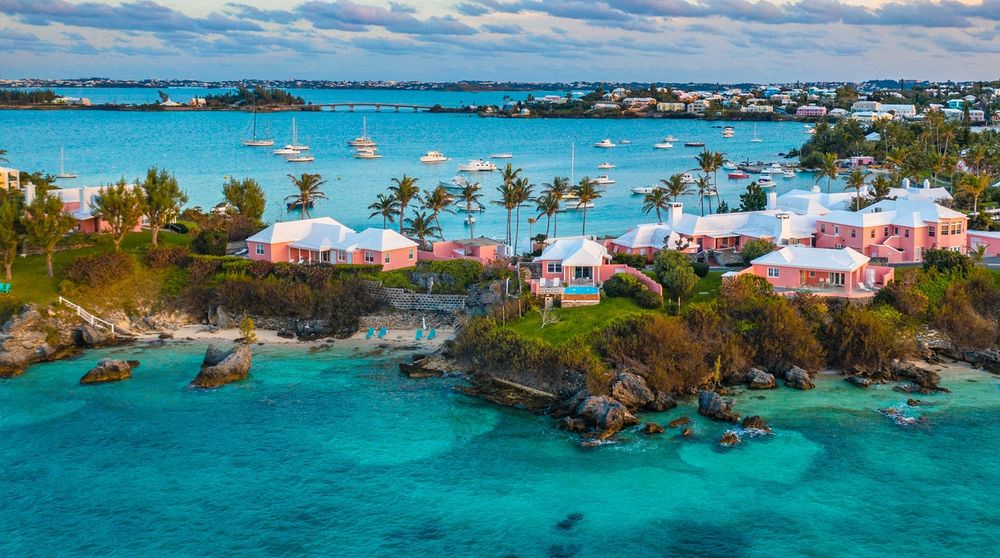The islands of Bermuda are located 1000 km off the east coast of the United States in that part of the Western Atlantic known as the Sargasso Sea. Bermuda was created by volcanic eruptions along the Mid-Atlantic Ridge about 100 million years ago. At that time, the Atlantic Ocean was much narrower and Bermuda was in closer proximity to Europe and Africa. Seafloor spreading and the widening of the Atlantic shifted Bermuda away from the
Eastern Hemisphere, while maintaining its position relative to the North American coast. During the early Pleistocene (about 1-2 million years ago), the top of the volcanic seamount was eroded down below sea level and corals began to grow around the margins, thus producing the only atoll in the North Atlantic. Today, the volcanic basement rocks of Bermuda are completely covered by limestone. This limestone originated as carbonate sand from the reefs that formed dunes, which subsequently were cemented through the action of rain into rock. All known caves of Bermuda are formed in this limestone caprock.
More than 150 limestone caves are known from Bermuda. These caves are of impressive size, containing abundant stalactites and stalagmites. Although most cave entrances are situated inland, many of the caves extend down to sea level and contain clear, deep, anchialine pools in their interior. Diving explorations of the underwater sections of Bermuda’s caves have resulted in the discovery of extensive networks of cave passage at depths averaging 18 m. Bermuda’s longest cave, the Green Bay Cave System is totally submerged and contains more than 2 km of explored passageways. The presence of stalactites and stalagmites in the underwater caves is proof that the caves must have been dry for prolonged periods of time during the Ice Ages when sea level was at least 100 m lower than today.
An amazing variety of previously unknown, cave-adapted species have been discovered in Bermuda’s anchialine caves. While some of these species are related to similar forms from caves on opposite sides of the Atlantic, others have close affinities to cave species from the Pacific Ocean or even from the deep sea. It has been suggested that some of Bermuda’s marine cave invertebrates reached the island via the Gulf Stream from the Caribbean, while others may have survived on submerged and emergent seamounts along the Mid Atlantic Ridge for 100 million years. Still other species may represent relict deep sea fauna or even descendents of animals which once inhabited the Tethys Sea – the name for the world ocean that existed at the time all the Earth’s land masses were combined into one supercontinent.
Seventy-five stygobitic (aquatic cave-adapted) species have been identified from Bermudian caves including 64 crustaceans, 5 mites, 2 ciliates, 2 gastropod molluscs and 2 segmented worms. In order of abundance, the crustaceans include 18 species of copepods, 18 ostracods, 7 amphipods, 6 shrimps, 6 cumaceans and 3 isopods. Notable in their absence are remipedes and thermosbaenaceans.






























